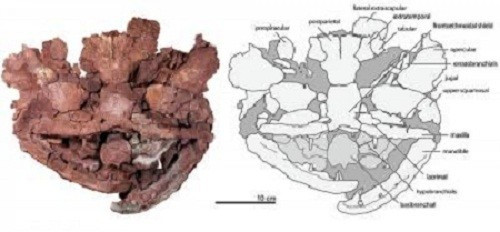375M-Year-Old Predatory Fish Prowled North America Before Backboned Animals

A new species of large predatory beast of a fish, packing a powerful bite, was already on the prowl in ancient North American waterways before backboned animals existed, researchers say.
The Academy of Natural Sciences recently announced that these predators, Laccognathus embryi, lived during the Devonian Period - often described as the Age of Fishes - from 415 to 360 million years ago. This period was rich with an abundance of aquatic life populating ancient seas, lagoons and streams.
Laccognathus embryi is a lobe-finned fish and its closest living relative is the lungfish, researchers say. It possibly grew to about five or six feet long, had a wide head with small eyes and robust jaws filled with large piercing teeth.
Researchers found the fossil of the 375-million-year-old beast, a new species, on Ellesmere Island in the remote Nunavut Territory of Arctic Canada. This is the same site where the Tiktaalik roseae, the important transitional animal considered a missing link between fish and the earliest limbed animals, were found. The same group of researchers found both species.
Both are predators, and there is certainly a possibility that they competed for prey, lead author Jason Downs, also of the Academy, told the media. It is also possible that they lived at different depths or even employed different feeding strategies that would have enabled them to establish unique feeding niches in these environments.
Though the team discovered the first Laccognathus embryi fossil about 10 years ago, they only recently described the species in the current issue of the Journal of Vertebrate Paleontology, describing the new denizen of the Devonian.
They were collecting additional samples from the field and analyzing them.
Edward Ted Daeschler, Downs, along with their colleagues from the University of Chicago and Harvard University, named new species in honor of Ashton Embry, a Canadian geologist whose work in the Arctic islands has paved the way for the authors' paleontological explorations.
I wouldn't want to be wading or swimming in waters where this animal lurked, Daeschler, a co-author of the paper and the Academy's curator of vertebrate zoology, said in a statement. Clearly these Late Devonian ecosystems were vicious places, and Laccognathus filled the niche of a large, bottom-dwelling, sit-and-wait predator with a powerful bite.
© Copyright IBTimes 2024. All rights reserved.






















